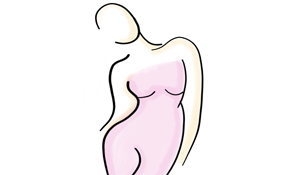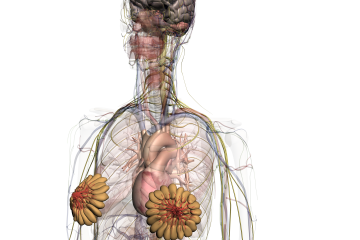Post-Mastectomy Diaphragmatic Breathing is an essential, evidence-based component of the postoperative pulmonary and lymphatic rehabilitation protocol following mastectomy and breast reconstruction. Physiologically, post-surgical pain and splinting can induce a restrictive ventilatory pattern, reducing functional residual capacity (FRC) and predisposing the patient to postoperative pulmonary complications (PPCs), notably atelectasis.
Diaphragmatic breathing directly addresses this by maximizing transpulmonary pressure gradients, promoting lung recruitment, and enhancing gas exchange. Furthermore, the diaphragm’s excursions serve as a crucial lymphatic pump, generating negative intrathoracic pressure that enhances central lymph flow via the thoracic duct.
“Post-mastectomy lymphedema is secondary lymphedema that impairs the lymphatic drainage system of the breast. Its signs and symptoms include increased weight and limb size. Since 60% of all lymph nodes are found right beneath the diaphragm, it serves as a lymphatic pump. By exerting a negative pressure and drawing the lymph through the lymphatic system, diaphragmatic breathing (DB) promotes the cleaning of the lymph nodes.”1
The mechanisms involved with diaphragmatic breathing are clinically vital for managing or mitigating post-mastectomy lymphedema, a significant morbidity, by facilitating the clearance of interstitial fluid from the ipsilateral extremity and torso. Therefore, the integration of structured, deep breathing exercises is a mandatory non-pharmacological strategy for optimizing pulmonary function, controlling perioperative pain, and reducing chronic sequelae in breast cancer survivors undergoing reconstructive surgery.
Incorporate Diaphragmatic Breathing Into Your Cancer Rehab Program.
Elevate your standard of care in cancer and lymphedema management by subscribing to our specialized online program. You will gain critical, actionable insights through interactive lectures, expert demonstrations, and real patient case studies, ensuring you master the techniques necessary for consistently achieving better patient outcomes. Enroll today to enhance your clinical expertise and leadership skills.
Maximizing Post-Surgical Outcomes in Cancer Rehabilitation
The Fundamentals of Lymphedema Treatment

References
- Ahmed, Fatima, PhD; Aboelnour Nanacy HA, PhD; Elsebaie Ashraf E.M., MD Wahid, Amany R.m. Abdel M.S.c; Effect of resisted deep breathing on post-mastectomy lymphedema. The Medical Journal of Cairo University, Vol 91, no 4 December 1443-1448, 2023
- Peled, A. W., et al.. Patient Perspective on Post-Breast Reconstruction Exercise and Physical Therapy. Plastic and Reconstructive Surgery, 148(4), 724e–731e. (2021)
- Vinolo-Gil MJ, Martín-Valero R, Martín-Vega FJ, Rodríguez-Huguet M, Perez-Cabezas V, Gonzalez-Medina G. Respiratory Physiotherapy Intervention Strategies in the Sequelae of Breast Cancer Treatment: A Systematic Review. Int J Environ Res Public Health. 2022 Mar 23;19(7):3800. doi: 10.3390/ijerph19073800. PMID: 35409486; PMCID: PMC8997605.

